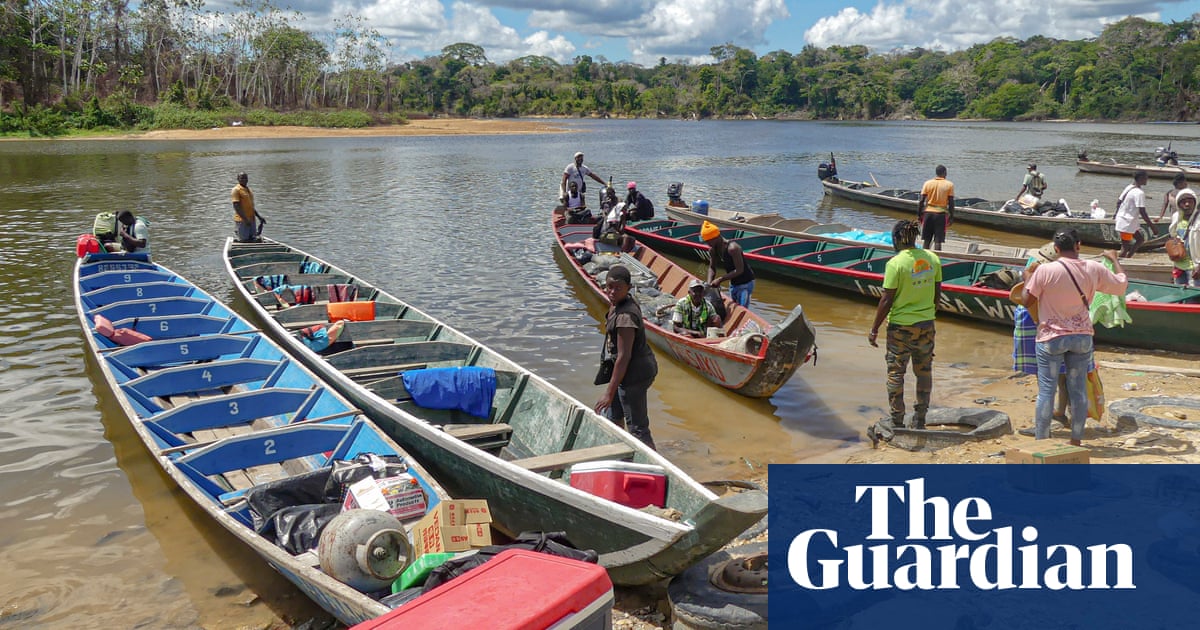Despite their immense size, species of prehistoric giant kangaroos from a site in Queensland were probably homebodies with a surprisingly small range compared to other kangaroos, according to new Australian research.
Protemnodon, which roamed the Australian continent between 5m and 40,000 years ago and is now extinct, was significantly larger than its modern relatives. Some species weighed up to 170kg, making them more than twice as heavy as the largest red kangaroo.
Given their size, researchers expected they might have an expansive territory, said University of Wollongong palaeo-ecologist Chris Laurikainen Gaete, the co-author of the study published in PLOS One.
That’s because in most modern plant-eating mammals, including kangaroos and other macropods, larger body size correlated with geographic range, he said. A small marsupial such as the pademelon, for example, occupies an area smaller than a kilometre squared, whereas the red kangaroo – the largest of all kinds – in outback Australia can hop long distances, sometimes further than 20km.
But analysis of fossil teeth found near Mt Etna, 30km north of Rockhampton in Queensland, revealed something quite different. These protemnodon kept to close quarters, living and dying near the caves where their remains were found.

Co-author Dr Scott Hocknull, a vertebrate palaeontologist and senior curator at the Queensland Museum, said the individuals from Mt Etna seemed to be “real homebodies” that stayed within “a tiny pocket” in and around the limestone caves.
“These gigantic kangaroos were just chilling at home, eating the rainforest leaves, because there were heaps of them around. That also means that the environment was quite stable. It meant that over hundreds of thousands of years, these animals decided that staying put was a good bet.”
The population at Mt Etna was “probably quite happy” for some time, Hocknull said. The rainforest probably provided a reliable source of food, while the caves offered protection from prehistoric predators, such as marsupial lions.
But their restricted range was a “bad bet” in the end, Hocknull said, because it pre-disposed them to a risk of extinction when a changing climate and increasing aridity disrupted the rainforest environment about 280,000 years ago.

Dr Isaac Kerr, who specialises in kangaroo palaeontology at Flinders University and was not involved with the study, said protemnodon fossils – found mainly in the south and east of the country – indicated there were several species adapted to different environments.
“Probably they were all over the whole continent, including New Guinea,” he said. A site in Tasmania had one of the latest surviving species, dated to 41,000 years ago.
after newsletter promotion
Kerr said these megafauna kangaroos ranged in size but were generally stockier than their modern counterparts, with shorter feet.
Protemnodon probably looked something like a wallaroo, he said, “squat and muscular but still quite large compared to a modern kangaroo”.
Mt Etna is one of Australia’s richest fossil sites, containing evidence of ancient Pleistocene rainforests and records covering periods of past environmental change when rainforests gave way to open, arid environments.
The researchers’ next step was to apply similar techniques to fossils of smaller kangaroos such as tree kangaroos, pademelons and rock wallabies from Mt Etna, which still have living descendants, to understand how they survived the environmental changes while protemnodon died out.

The study compared the unique chemical signatures found in the local geology with those found in the fossilised teeth to establish the range of each animal, Gaete said.
“Strontium is an element that varies in the environment, specifically in underlying bedrocks – so a limestone will have a significantly different strontium signature compared to something like volcanic rock or basalt,” he said. These unique signatures made their way into soil and plants, and were reflected in the fossilised teeth of herbivores that ate those plants.
Laurikainen Gaete said the technique could be used to understand, on a site-by-site basis, why certain species of megafauna disappeared from particular places.
Hocknull said: “It fundamentally shifts how palaeontologists and ecologists look at the fossil record.”

 4 hours ago
3
4 hours ago
3













































